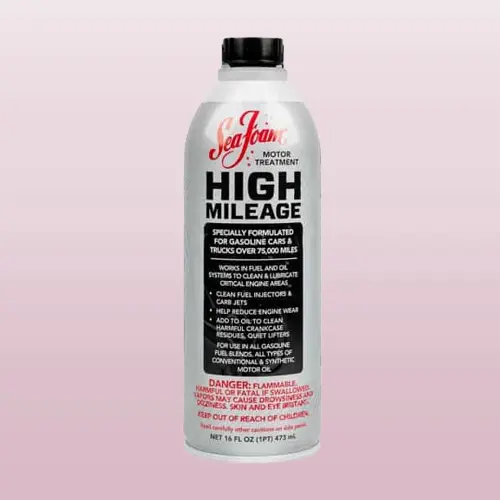In the realm of automotive maintenance, products like Seafoam have gained popularity for their claimed benefits in improving engine performance and fuel efficiency. However, beneath the glossy promises lie potential negative effects that vehicle owners should be aware of.
In this article, we delve into the seafoam negative effects, shedding light on the drawbacks and risks associated with its usage. Whether you’re a seasoned car enthusiast or a curious driver, this guide will equip you with the knowledge needed to make informed decisions about using seafoam in your vehicle.
What is a Seafoam
Seafoam is an automotive additive formulated to improve engine performance and cleanliness. It is designed to break down carbon deposits and contaminants that can accumulate within the engine and fuel system over time.
By facilitating the removal of these deposits, Seafoam aims to enhance combustion efficiency, fuel system function, and overall engine health. It is available in various forms, such as liquid or spray, and is often used as part of routine maintenance to optimize a vehicle’s operation.
Seafoam Negative Effects
Seafoam, a petroleum-based additive, has gained attention for its purported ability to clean carbon deposits, lubricate engine components, and improve fuel system efficiency. However, a closer look reveals potential downsides that users should consider. Let’s explore these seafoam negative effects and delve into the details:
Engine Misfires and Stalling

One of the concerning seafoam negative effects is the possibility of engine misfires and stalling. Some users have reported instances where their vehicles experienced rough idling or even stalled after using seafoam. This phenomenon may be attributed to the loosening of carbon deposits, which could potentially clog fuel injectors or other engine components.
Catalytic Converter Damage
Using seafoam in your vehicle’s fuel system could lead to damage to the catalytic converter. The chemicals present in seafoam may adversely react with the catalytic converter, causing overheating or even failure. This could result in costly repairs and reduced vehicle performance.
Oil Contamination
Seafoam can also find its way into the engine oil, potentially diluting the oil and affecting its lubricating properties. This could lead to increased friction and wear on engine components, reducing the overall lifespan of the engine.
Excessive Smoke Emissions

While seafoam is known for its ability to clean carbon deposits, this process may lead to temporary excessive smoke emissions from the exhaust. This can be alarming to vehicle owners, but it usually subsides after a short period.
Oxygen Sensor Malfunction
The use of seafoam may interfere with the proper functioning of oxygen sensors in the exhaust system. This could trigger the vehicle’s onboard diagnostic system, leading to a “check engine” light and potential emissions-related issues.
Throttle Body and Intake Valve Buildup
Ironically, seafoam may contribute to the buildup of gunk and deposits on the throttle body and intake valves over time. This can hinder airflow and negatively impact engine performance. This is one of the major seafoam negative effects.
Increased Sludge Creation
Another seafoam negative effect is the potential for increased sludge creation. While Seafoam is meant to clean carbon deposits, it can also dislodge and redistribute other contaminants within the engine. This can lead to the creation of sludge, a thick, gel-like substance that can accumulate in various engine components. Excessive sludge can impede proper oil circulation, leading to reduced lubrication and potential damage to critical parts.
Compatibility of Seafoam with Certain Injector Systems
While seafoam can offer benefits for many types of engines, it’s essential to recognize its limitations and potential risks, especially when it comes to certain injector systems. Vehicle owners should exercise caution and seek expert advice before introducing seafoam into their engines, particularly if they have engines equipped with direct fuel injection systems.
By making informed decisions, drivers can avoid potential pitfalls and ensure the optimal health and performance of their vehicles.
The Impact on Fuel Efficiency

Fuel efficiency is a primary concern for many vehicle owners, and it’s important to understand how seafoam use can influence this aspect. Let’s explore the potential impact of seafoam on fuel efficiency and what drivers should be mindful of.
The Prospective Benefits
Seafoam’s proponents argue that by cleaning carbon deposits and other contaminants from the engine’s components, the additive can optimize combustion efficiency. Cleaner fuel injectors, valves, and combustion chambers are believed to lead to a more complete and efficient burning of fuel, which could potentially result in improved mileage.
Realistic Expectations
However, it’s important for vehicle owners to set realistic expectations. While seafoam may offer benefits in specific scenarios, its impact on fuel efficiency may not be as dramatic as some enthusiasts claim. Modern engines and fuel systems are designed with efficiency in mind, and the incremental gains from using seafoam might not be as significant as anticipated.
Potential Downsides
Interestingly, the pursuit of improved fuel efficiency through seafoam use could inadvertently lead to negative effects, as discussed earlier. For instance, the introduction of seafoam into the engine oil could compromise lubrication, leading to increased friction and potentially negating any gains in fuel efficiency.
A Balanced Approach
Drivers who are keen on optimizing fuel efficiency should adopt a balanced approach. Regular maintenance practices such as proper tire inflation, timely oil changes, and using high-quality fuels can have a more substantial impact on fuel economy than occasional seafoam treatments. Moreover, overusing seafoam could lead to some of the negative effects we’ve explored.
Conclusion
As vehicle owners, it’s essential to weigh the potential benefits against the seafoam negative effects before using this additive in your car’s engine. While seafoam may offer certain advantages in terms of cleaning and maintenance, it’s crucial to be aware of the possible drawbacks and risks. By staying informed and making educated decisions, you can ensure the longevity and optimal performance of your vehicle.
Frequently Asked Questions
Is seafoam safe for all types of engines?
While seafoam is marketed as safe for various engine types, it’s essential to research and follow manufacturer recommendations for your specific vehicle.
How often should I use seafoam in my vehicle?
Using seafoam too frequently can potentially lead to negative effects. It’s advisable to follow the recommended usage guidelines provided by the product manufacturer.
Can seafoam damage my vehicle’s paint or exterior?
Seafoam is designed for internal engine use and should not come into contact with your vehicle’s paint or exterior. Be cautious during application to prevent unintended damage.
Can I use seafoam in diesel engines?
Yes, seafoam can be used in diesel engines. However, it’s crucial to ensure compatibility and follow usage instructions to avoid adverse effects.
